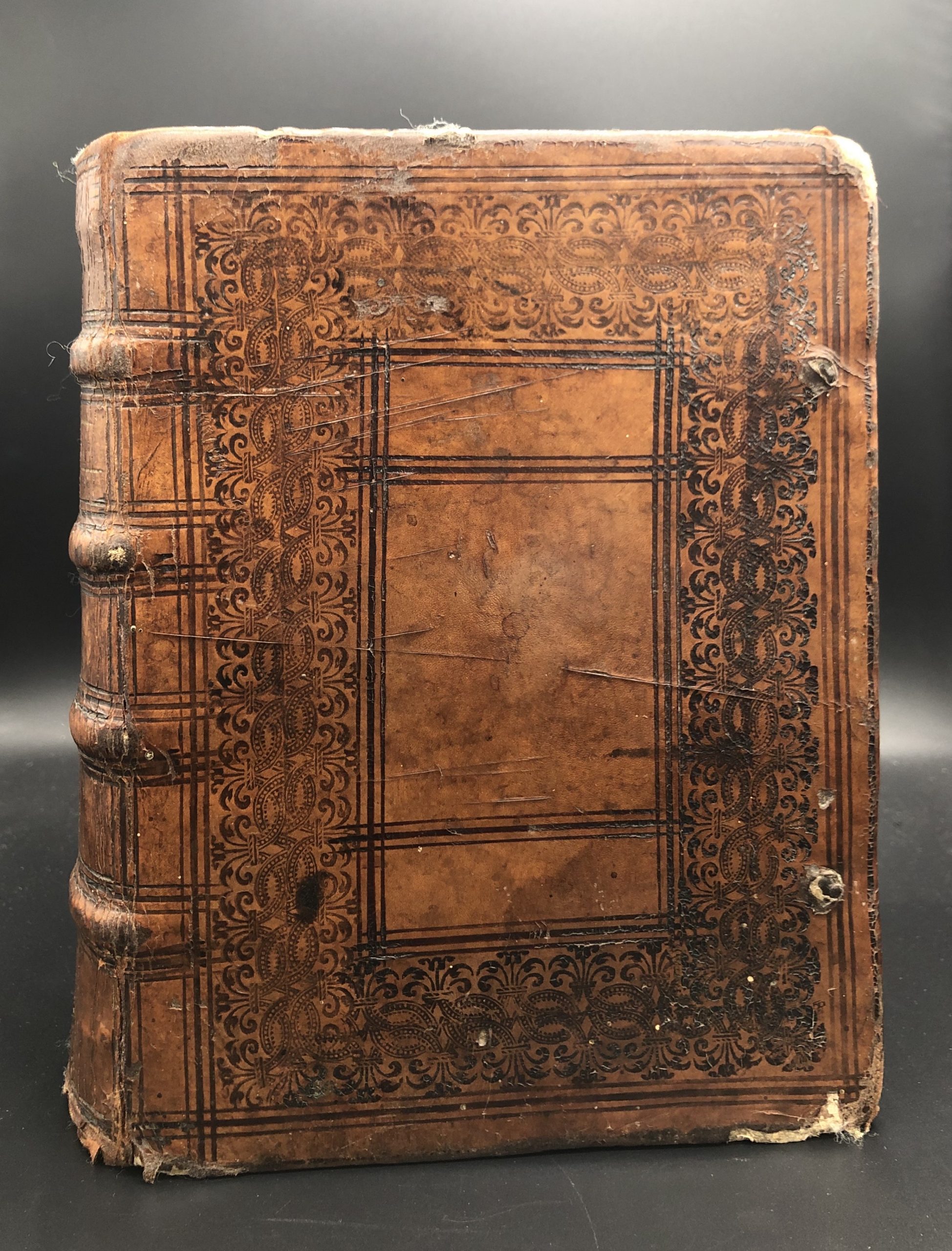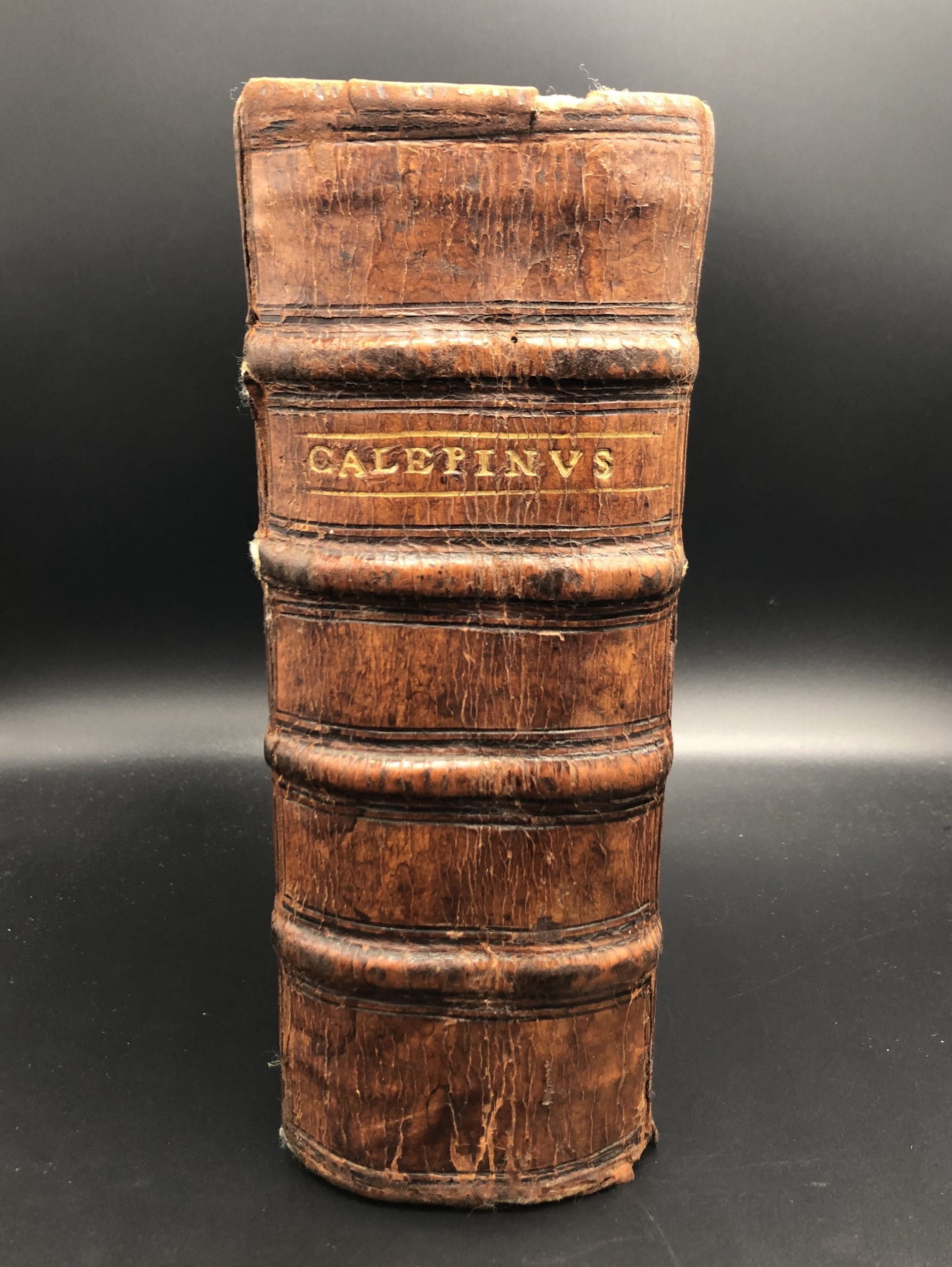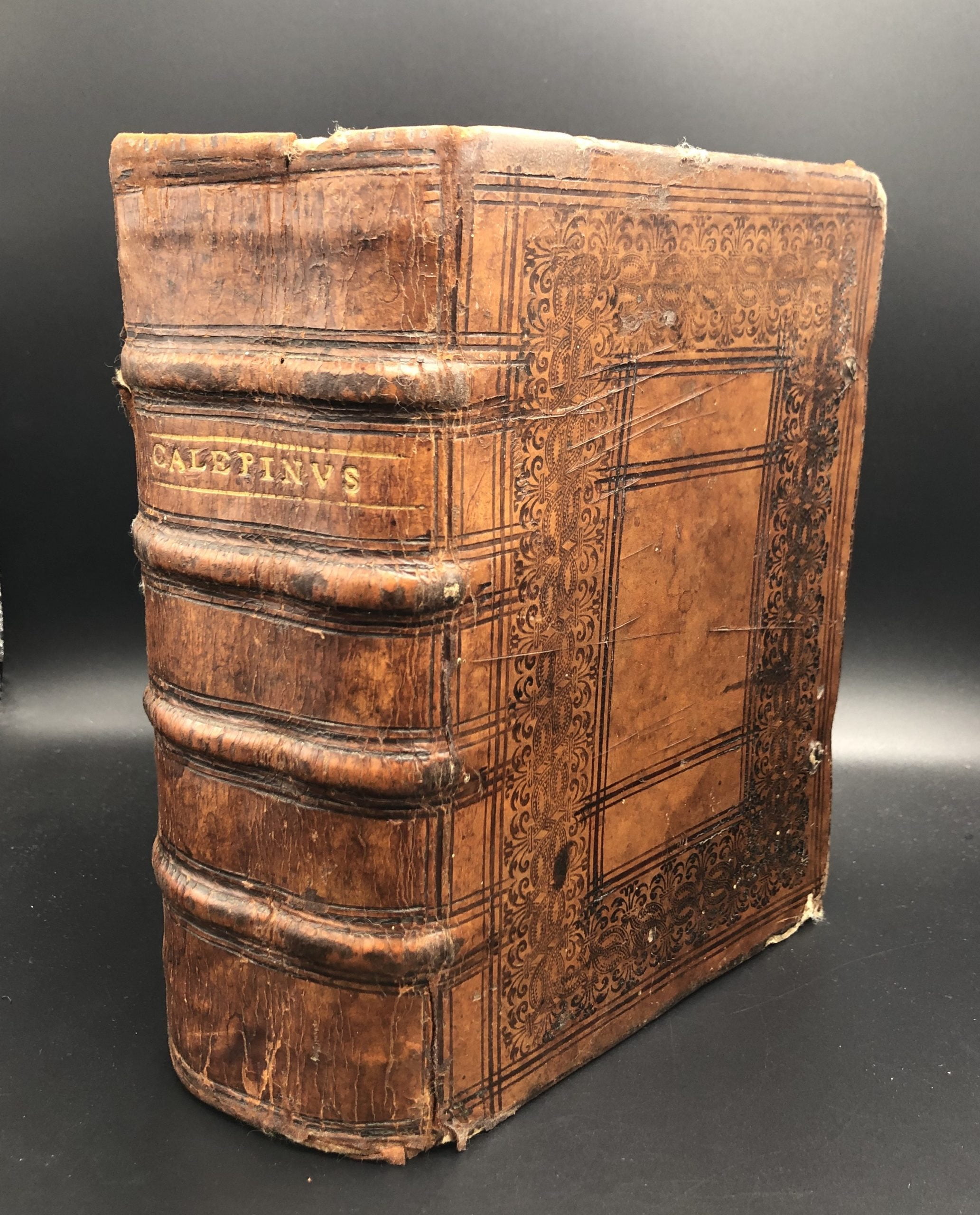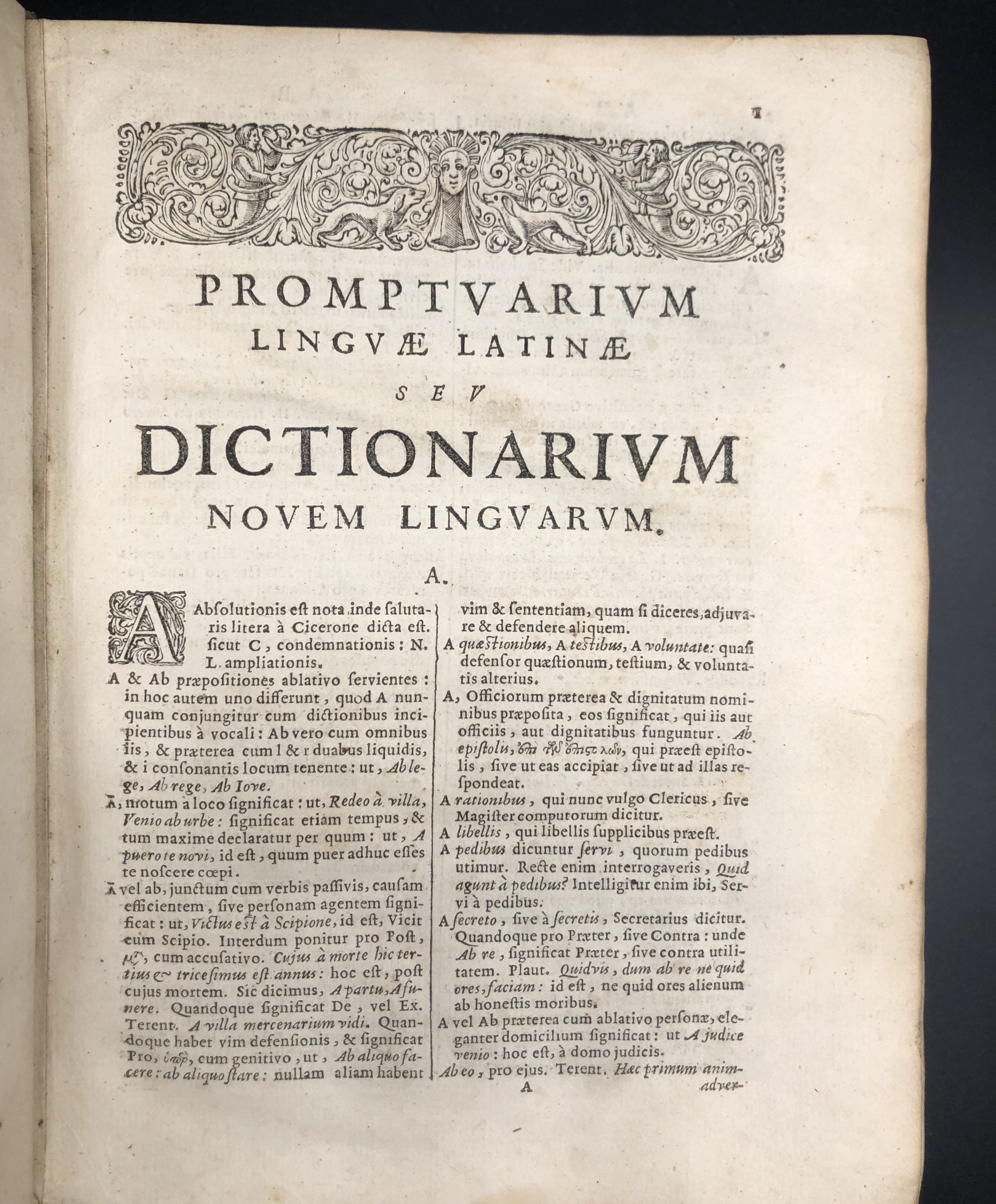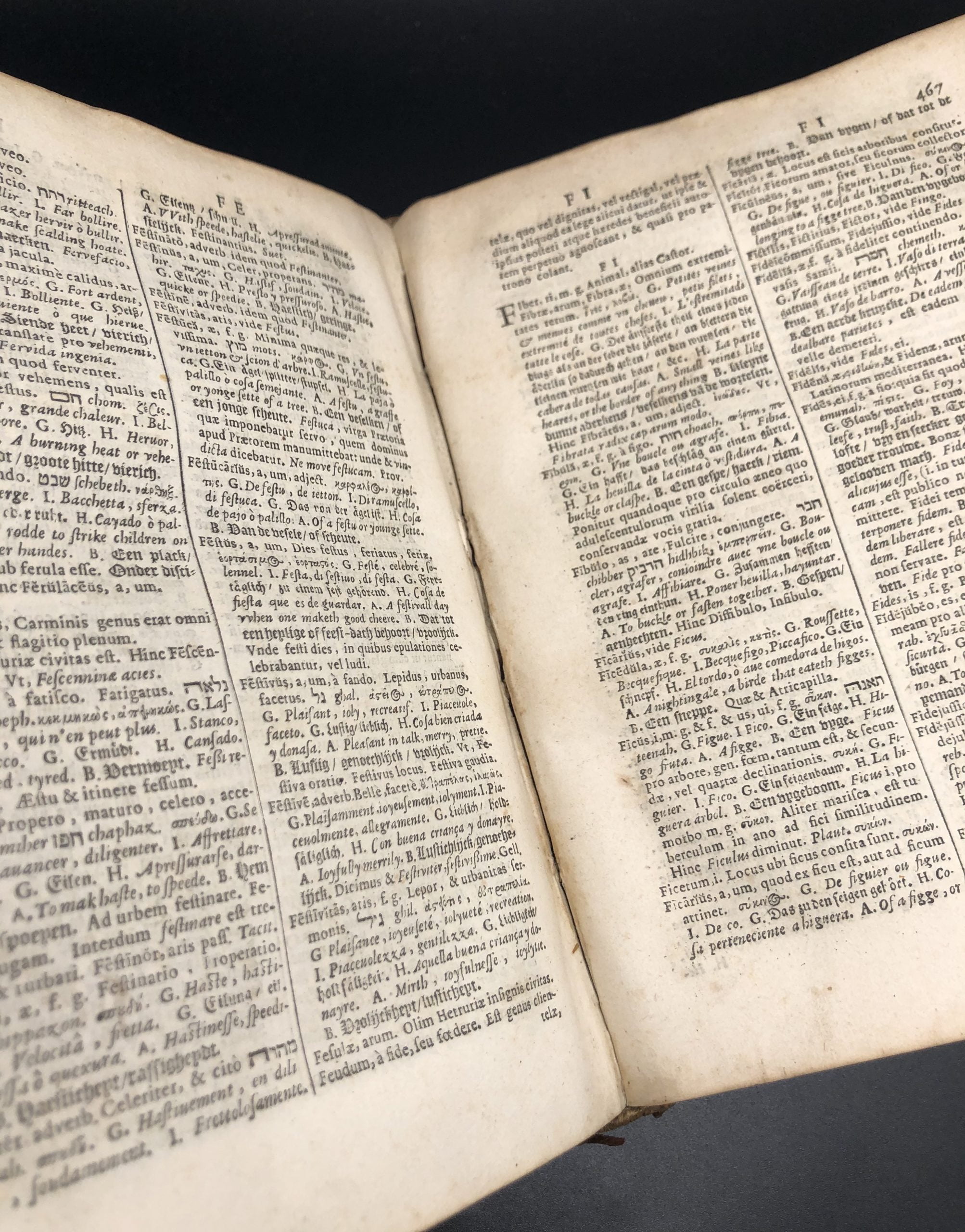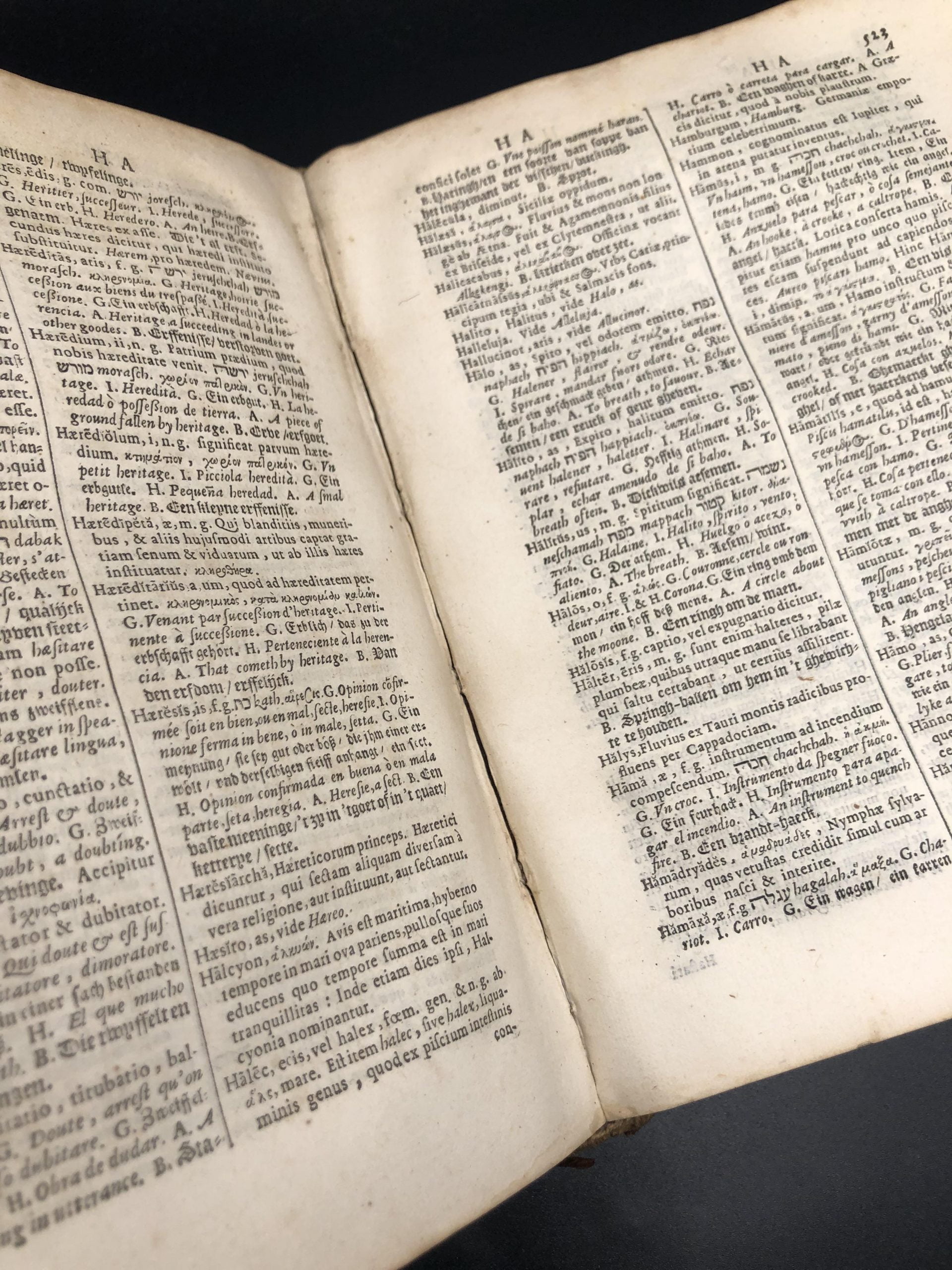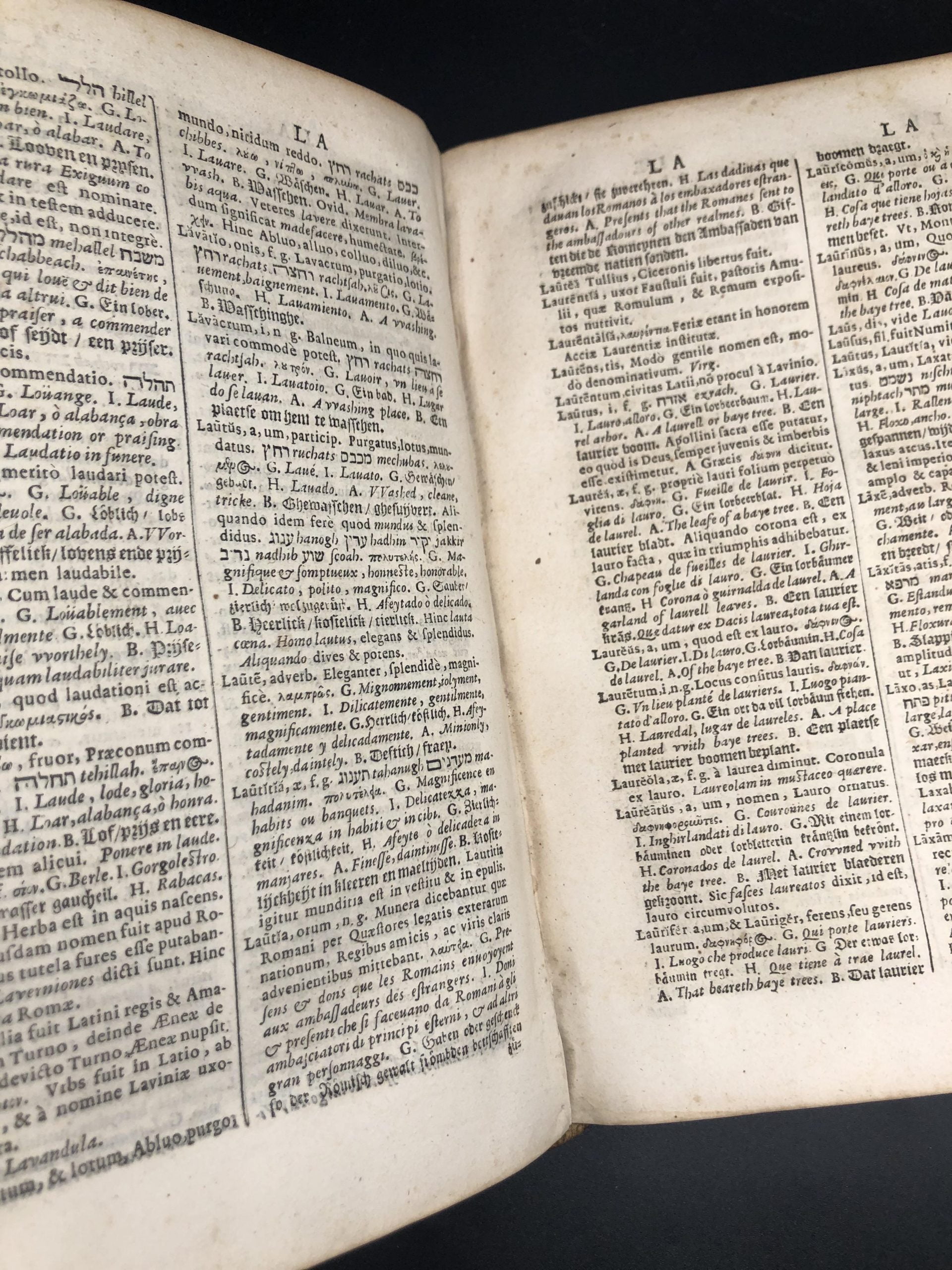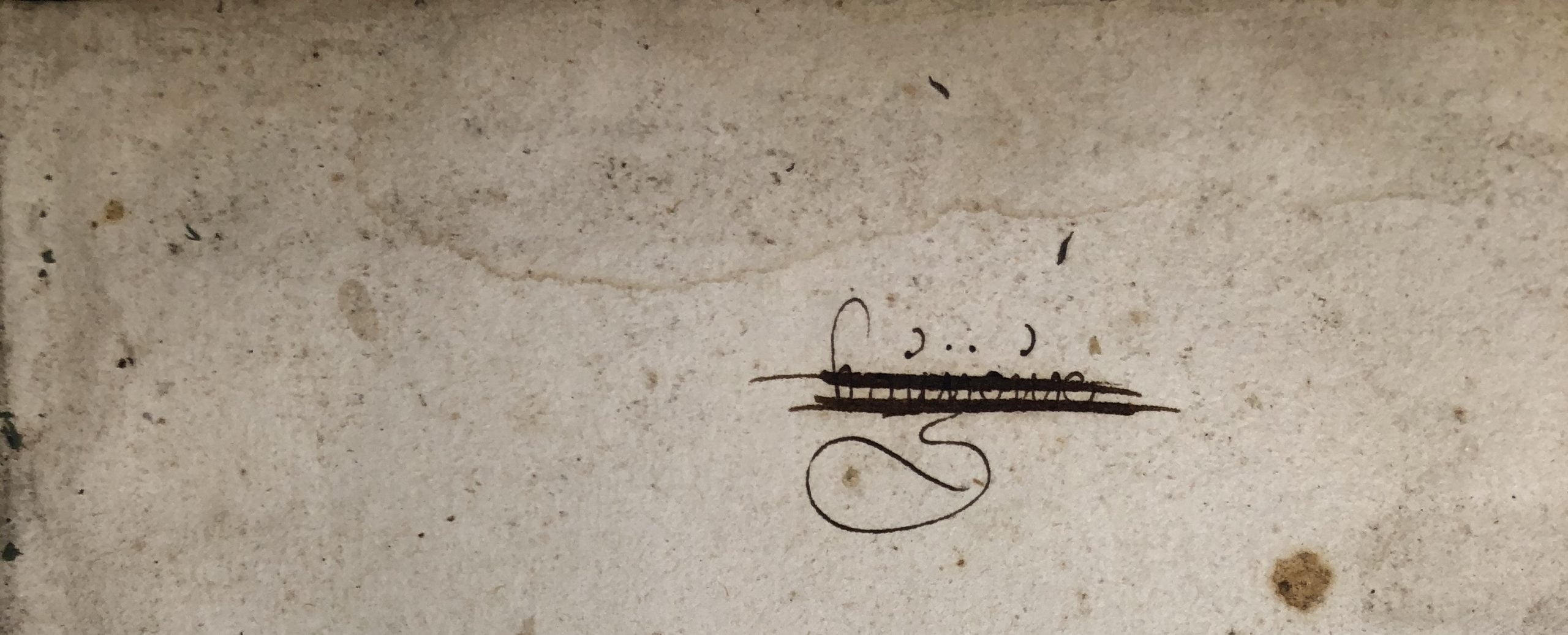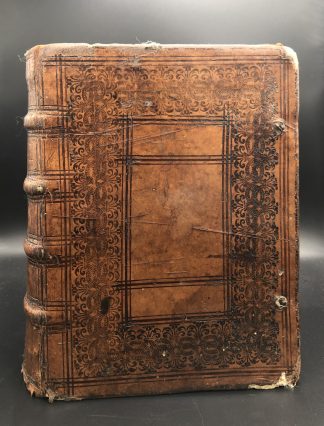CALEPINUS, Ambrosius.
POLYGLOT DICTIONARY
Linguarum novem […] Dictionarium
Leiden, A. Commelinus, [1654]£2,500.00
FIRST EDITION thus. Small 4to. 2 parts in 1, separate t-p to each, pp. (viii) 628. Roman and Italic letter, little Gothic, Greek, Hebrew and Greek, double column. First engraved t-p with Fame as angel playing trumpet with small map of Europe and North Africa (plate inverted), second t-p in red and black with woodcut printer’s device, woodcut initials and ornaments. First t-p very slightly dusty, intermittent faint marginal water stain to couple of gatherings, a handful of pages a bit browned, very small ink splash to fore-edge of couple of gatherings, tear to blank fore-edge of first 3O2 and lower outer corner (blank) of 4T1, tiny ink burn to first 4F3 touching one letter, little worm hole to fore-edge of first 4H4-second I4. A very good copy in contemporary German calf, traces of ties, tripled blind ruled to a panel design, outer border with rolls of palmettes in blind, raised bands, spine triple blind ruled, title gilt to spine, extremities worn, spine and joints bit cracked. Modern bookplate to front pastedown, early ex-libris of D.(?) Massel to first t-p.
Finely bound, very good copy of the first edition of this scarce, abridged version, in no less than nine languages, of the most influential early modern polyglot dictionary. This is variant A, with the imprint ‘in Bibliopolo’ (Jones, ‘German Lexicography’, 261). Ambrogio Calepino (1440-1510) was an Italian lexicographer renowned for his Latin dictionary of 1502; known as ‘il Calepino’, it was reprinted dozens of times in the course of the C16. Despite the changed ‘intellectual climate’ beginning from the second half of the C16, ‘with vernacular languages throughout Europe conspiring to defeat the humanists’ project and make classical Latin an irredeemably foreign language to all, Calepino’s dictionary became the main translation dictionary in use’ (Moss, ‘Renaissance Truth’, 24), especially thanks to the subsequent enlargements by sundry European scholars, which turned it into a polyglot dictionary featuring up to 13 languages.3 This 1654 Leiden edition included additions by Jean Passerat (1534-1602), the successor of Ramus to the professorship of Latin at the Collège de France, and was edited by Cornelis Schrevel (1608-64), professor at Leiden and author of a Latin-Greek lexicon. Extremely successful thanks to its portable format, it features definitions in Latin, Greek, Hebrew, French, Italian, German, Spanish, English and Flemish. The preface remarks indeed that ‘the weight of the original work, and the crowding of the numerous examples, had become very confusing, and made reading tedious’. In layout, format and content, Schrevel’s edition made it a more useable instrument for private study. A solid reference work in a handsome binding.
Pettegree & Wasby, Netherlandish Books, 6393; Sommervogel 186:7; Graesse I, 15. W.J. Jones, German Lexicography in the European Context (Berlin, 2000); A. Moss, Renaissance Truth and the Latin Language Turn (Oxford, 2003).In stock


